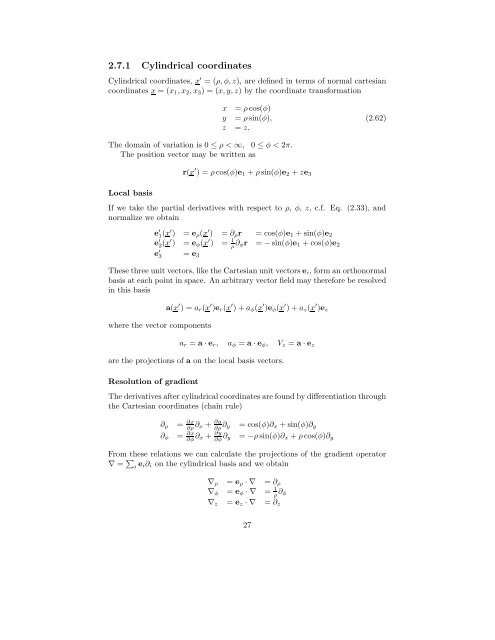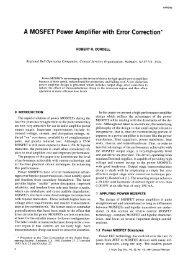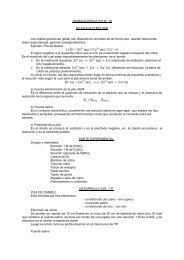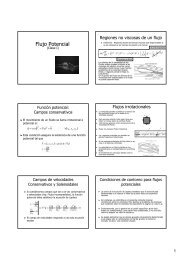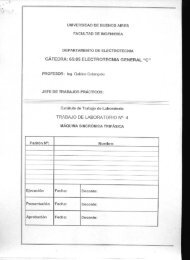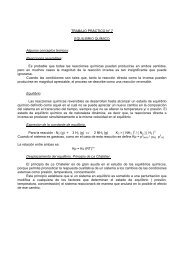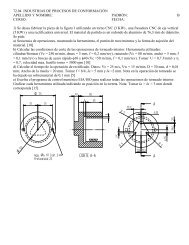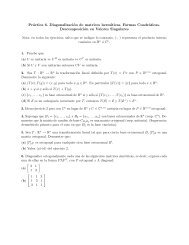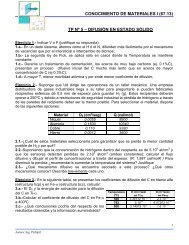Introduction to vector and tensor analysis
Introduction to vector and tensor analysis
Introduction to vector and tensor analysis
You also want an ePaper? Increase the reach of your titles
YUMPU automatically turns print PDFs into web optimized ePapers that Google loves.
2.7.1 Cylindrical coordinates<br />
Cylindrical coordinates, x ′ = (ρ, φ, z), are defined in terms of normal cartesian<br />
coordinates x = (x1, x2, x3) = (x, y, z) by the coordinate transformation<br />
x = ρ cos(φ)<br />
y = ρ sin(φ),<br />
z = z,<br />
The domain of variation is 0 ≤ ρ < ∞, 0 ≤ φ < 2π.<br />
The position vec<strong>to</strong>r may be written as<br />
Local basis<br />
r(x ′ ) = ρ cos(φ)e1 + ρ sin(φ)e2 + ze3<br />
(2.62)<br />
If we take the partial derivatives with respect <strong>to</strong> ρ, φ, z, c.f. Eq. (2.33), <strong>and</strong><br />
normalize we obtain<br />
e ′ 1 (x′ ) = eρ(x ′ ) = ∂ρr = cos(φ)e1 + sin(φ)e2<br />
e ′ 2 (x′ ) = eφ(x ′ ) = 1<br />
ρ ∂φr = − sin(φ)e1 + cos(φ)e2<br />
e ′ 3 = e3<br />
These three unit vec<strong>to</strong>rs, like the Cartesian unit vec<strong>to</strong>rs ei, form an orthonormal<br />
basis at each point in space. An arbitrary vec<strong>to</strong>r field may therefore be resolved<br />
in this basis<br />
where the vec<strong>to</strong>r components<br />
a(x ′ ) = ar(x ′ )er(x ′ ) + aφ(x ′ )eφ(x ′ ) + az(x ′ )ez<br />
ar = a · er, aφ = a · eφ, Vz = a · ez<br />
are the projections of a on the local basis vec<strong>to</strong>rs.<br />
Resolution of gradient<br />
The derivatives after cylindrical coordinates are found by differentiation through<br />
the Cartesian coordinates (chain rule)<br />
∂ρ = ∂x<br />
∂ρ ∂x + ∂y<br />
∂ρ ∂y = cos(φ)∂x + sin(φ)∂y<br />
∂φ = ∂x<br />
∂φ ∂x + ∂y<br />
∂φ ∂y = −ρ sin(φ)∂x + ρ cos(φ)∂y<br />
From these relations we can calculate the projections of the gradient opera<strong>to</strong>r<br />
∇ = <br />
i ei∂i on the cylindrical basis <strong>and</strong> we obtain<br />
∇ρ = eρ · ∇ = ∂ρ<br />
∇φ = eφ · ∇ = 1<br />
ρ ∂φ<br />
∇z = ez · ∇ = ∂z<br />
27


